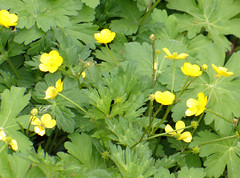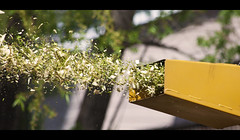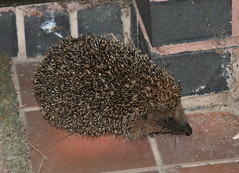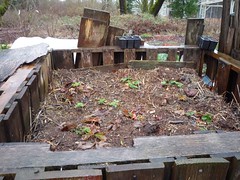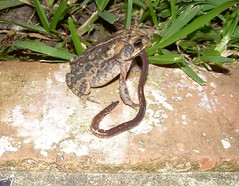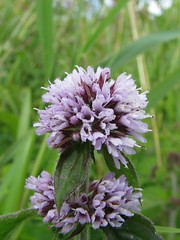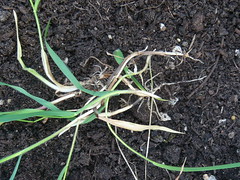 |
| just one couch grass plant...: brianpettinger |
It's amazing how quickly the earth has dried out. We were weeding an area that has become infested with couch grass. A few weeks ago the long roots would have pulled out quite easily, but it was hard work teasing the plants out of the soil trying not to break the roots. I'm sure you all know couch grass... it's a nasty perennial which is virtually impossble to get rid of. The roots are really rhizomes which spread under the soil surface and become entangled in the roots of other plants.
 |
| ...but a whole load of roots! 2_sheds |
One small plant usually hides metres of root under ground. It grows incredibly quickly but at least it's sterile and doesn't spread by seed as well!
Couch grass has a number of names - twitch grass, witchgrass, dog's grass, scutch, quackgrass and has been used in herbal medicine since classical Greek times. The Romans used it to treat kidney stones and as urinary problems. The common name dog grass comes from the fact that sick dogs will dig up the root and eat it. According to Culpepper
" Tis under the dominion of Jupiter, and is the most medicinal of all the Quick- grasses. Being boiled and drank, it opens obstructions of the liver and gall, and the stopping of urine, and eases the griping pains of the belly and inflammations; wastes the matter of the stone in the bladder, and the ulcers thereof also. The roots bruised and applied, do consolidate wounds. The seed doth more powerfully expel urine, and stays the lask and vomiting. The distilled water alone, or with a little wormseed, kills the worms in children. "
I don't think I'll try it!!!
Sarah's off sick this week - hope she didn't get my cold! But there si more good news. The team have got on the short list to give training in composting - keep your eyes and eras open for more news!
If you want to volunteer at the urban farm come along on Tuesdays after 10.00 for a chat or contact Dave at : dave_meara@hotmail.com



